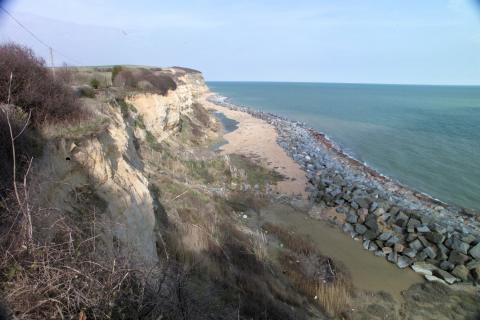FULL REVIEW PAPER
Image

What is already happening?
- Coastal erosion is strongly determined by site-specific factors and usually it is these factors that define the coastal response against a backdrop of a slowly receding coastline due to sea-level rise.
- A large proportion (17%) of the UK coastline is currently affected by erosion. Other areas are either stable or accreting. These changes are partly driven by sea-level rise, with the most visible aspects of coastal change seen through extreme storm events.
- In Scotland, for the first time since the last glaciation, sea-level rise is outpacing vertical land movement caused by post-glacial crustal ‘rebound’, increasing coastal erosion rates.
CONFIDENCE LEVEL
HIGH
High evidence, high agreement
High confidence from the detailed and comprehensive studies that have been carried out to assess current coastal erosion rates (EUROSION, Futurecoast, ForeSight, Dynamic Coast projects).
What could happen in the future?
- Coastal erosion rate and extent in the UK is expected to increase in the future due to a combination of relative sea-level rise, reduced nearshore sediment supply, and impacts resulting from human activities and management.
- For the first time, all of Scotland’s firths will be exposed to increased erosion rates due to relative sea-level rise.
CONFIDENCE LEVEL
MEDIUM
Medium evidence, medium agreement
Coastal erosion is likely to be exacerbated by sea-level rise, and coastal response is susceptible to changes in storminess and wave direction, but there is uncertainty in the nature and scale of impacts. Nevertheless, model predictions of coastal retreat are becoming increasingly useful for coastal zone management.
Key Challenges and Emerging Issues
- Enhancing monitoring and modelling of extreme storm response and recovery to identify tipping points (e.g., wave dominated barrier coasts).
- Developing models that predict long-term and large-scale coastal system response to sea-level rise (and include management measures).
- Developing understanding of bio-physical interactions for model input to include, for example, extracellular polymeric substances (EPS) and vegetation effects on hydrological and sediment dynamics.